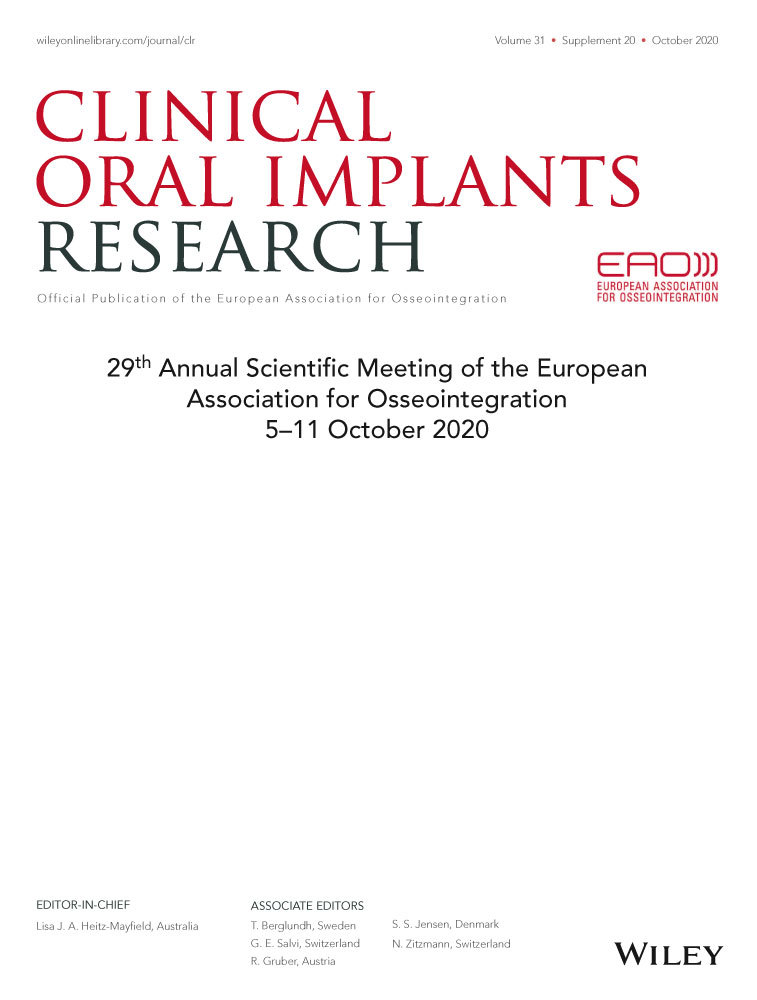Drills versus piezoelectric preparation for placement of zygomatic implants: three-year RCT results
6DFOC ePOSTER CLINICAL RESEARCH – SURGERY
Background: Zygomatic implants are an alternative to conventional bone augmentation for the severely atrophic maxilla. Conventional zygomatic drills can be difficult to control due to the risk of waving. The authors felt that the drilling precision could be improved and developed tips to be used with a piezoelectric surgery device.
Aim/Hypothesis: To compare the outcome of site preparation for zygomatic oncology implants using conventional preparation with rotary drills or piezoelectric surgery with dedicated inserts for placing two zygomatic implants per zygoma according to a within-person randomised controlled trial (RCT).
Materials and Methods: Twenty edentulous patients with severely atrophic maxillas not having sufficient bone volumes for placing dental implants and less than 4 mm of bone height subantrally, had their hemi-maxillas randomised according to a within-patient study design into implant site preparation with conventional rotational drills or piezoelectric surgery. Two zygomatic oncology implants (unthreaded coronal portion) were placed in each hemi-maxilla. Implants that achieved an insertion torque superior to 40 Ncm were immediately loaded with screw-retained metal reinforced acrylic provisional prostheses. Outcome measures were: prosthesis and implant failures, any complications, time to place the implants, presence of post-operative haematoma, and patient's preference by blINDIAd assessors, when possible. All patients were followed up to 3 years after loading.
Results: In two patients drills had to be used also at the piezoelectric surgery side to be able to prepare implant sites. One implant of the conventional drill group did not achieve an insertion torque superior to 40 Ncm since it fractured the zygoma. Two distal oncology implants failed in the same patient, who was not prosthetically rehabilitated. Six patients had at least one complications at drilled sites and five at piezoelectric surgery sites, the difference being not statistically significant (P = 1.0). Implant placement with convention drills took on average 14.35 minutes and with piezoelectric surgery 23.50 minutes, implant placement time being significantly shorter with conventional drilling (P = 0.000). Post-operative haematomas were larger at drilled sites in 11 patients and similar at both sides in 9 patients (P = 0.0001), and 16 patients found both techniques equally acceptable while four preferred piezoelectric surgery (P inferior to 0.0001).
Conclusions and Clinical Implications: Both drilling techniques achieved similar clinical results but conventional drilling required 9 minutes less and could be used in all instances, though it was more aggressive. These results may be system-dependent, therefore they cannot be generalised to other zygomatic systems with confidence.
Acknowledgements: This study was partially supported by Southern Implants (Irene, South Africa), the manufacturer of the zygomatic implants and the conventional drills evaluated in this study, however, data property belonged to the authors.
Keywords: Atrophic maxilla, Zygomatic implants, Implant site preparation, Piezoelectric surgery




